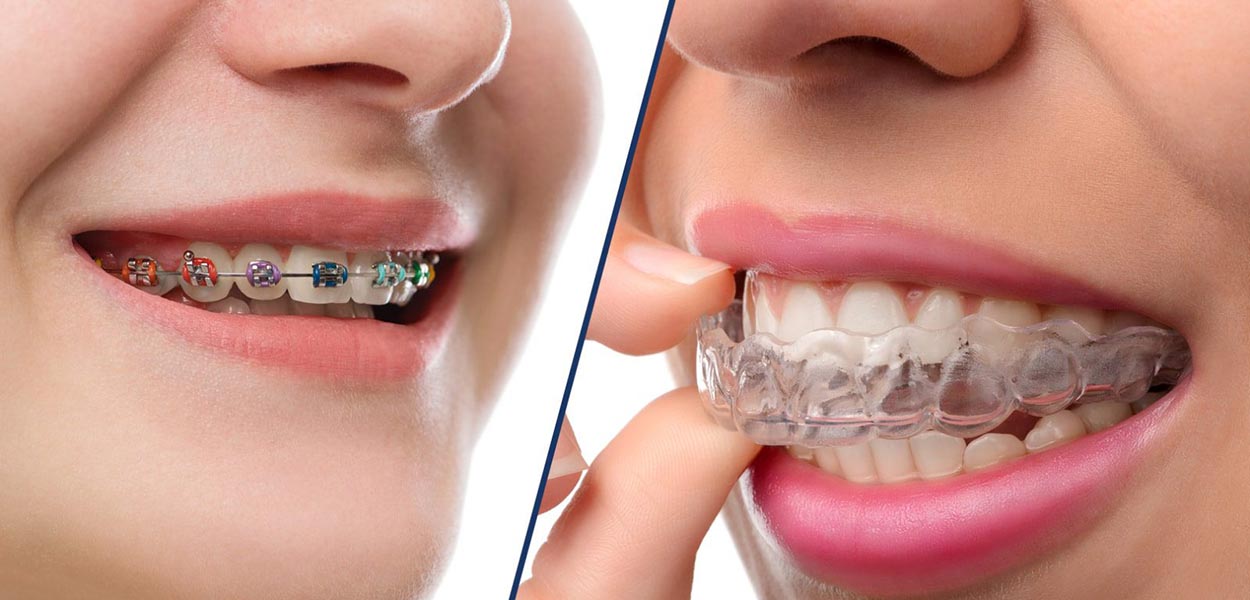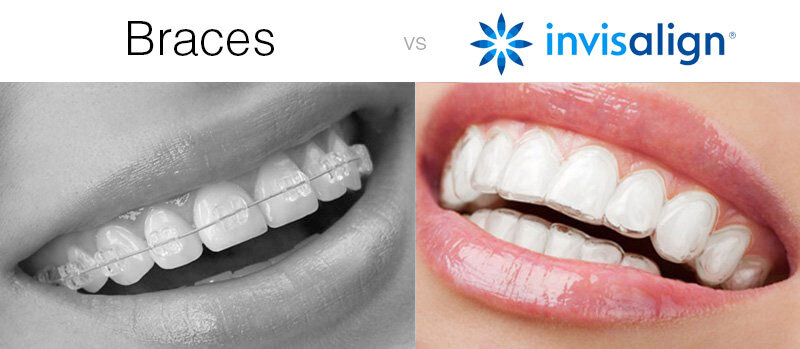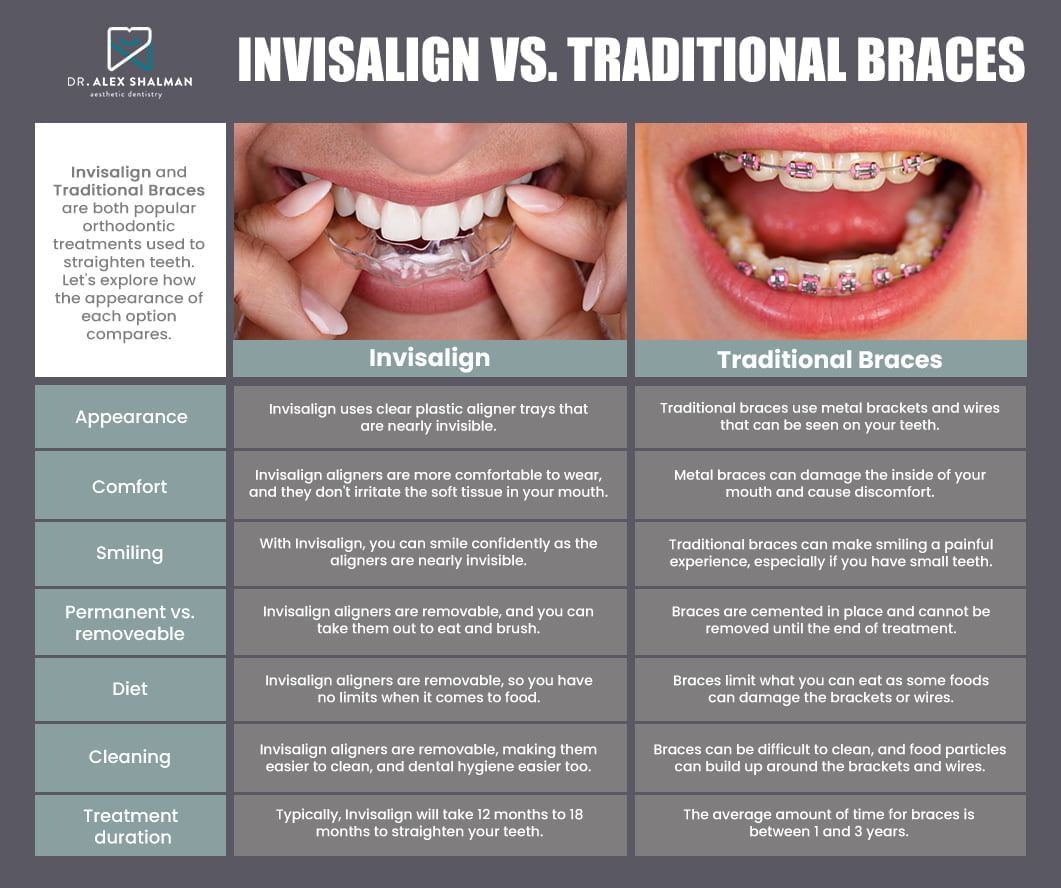What to Expect Throughout Your Invisalign Journey: A Comprehensive Introduction
What to Expect Throughout Your Invisalign Journey: A Comprehensive Introduction
Blog Article
Invisalign vs. Traditional Braces: Which Choice Is Right for You?
When considering orthodontic treatment, the choice in between Invisalign and standard dental braces provides numerous vital variables that merit cautious assessment. Invisalign supplies a very discreet option with detachable aligners, while typical dental braces give a more noticeable yet effective remedy for serious imbalance.
Summary of Treatment Options

In contrast, standard braces consist of metal braces and cords that are bonded to the teeth. This technique applies constant pressure with time to achieve positioning. While effective for complicated orthodontic issues, conventional braces require normal sees for modifications and can present challenges in maintaining oral hygiene because of the problem of cleaning about brackets and cords.
Both alternatives have their advantages, and the choice typically rests on details dental conditions, way of living preferences, and patient conformity. Eventually, getting in touch with an orthodontic specialist is important for figuring out the most appropriate treatment strategy tailored to individual requirements. Comprehending the nuances of each option can considerably influence the general success of orthodontic therapy.
Visual Factors To Consider
A substantial element influencing the choice in between Invisalign and conventional dental braces is the aesthetic charm each therapy offers. Invisalign aligners are crafted from clear plastic, making them virtually unnoticeable when worn. This discreet look is especially interesting adults and young adults that might feel uncomfortable concerning their orthodontic treatment. The ability to maintain an all-natural smile throughout the alignment process can considerably boost the person's self-confidence in professional and social settings.
On the other hand, standard dental braces include steel braces and cords, which can be more recognizable. While developments in orthodontic innovation have resulted in the growth of smaller braces and tinted elastics, conventional braces still maintain a more noticeable profile. For some individuals, the visibility of dental braces might deter them from seeking needed treatment.
Ultimately, the option in between Invisalign and standard dental braces might hinge on individual choices concerning visual appeals. Patients who focus on discretion commonly lean toward Invisalign, while those that are much less concerned about presence might choose for traditional braces. Comprehending the visual effects of each alternative is crucial for making a notified choice that aligns with one's way of life and preferences.
Convenience and Convenience

In regards to ease, Invisalign aligners are detachable, allowing patients to enjoy their preferred foods without constraint and keep ideal dental hygiene. Cleaning and flossing are streamlined, as the aligners can be taken out during these regimens, whereas traditional braces require mindful navigating around braces and cords.
In comparison, traditional braces necessitate routine changes, making them much less practical for those with hectic schedules. On the whole, the comfort and ease of Invisalign make it an appealing option for many people looking for orthodontic treatment.
Treatment Duration and Performance
While both Invisalign and typical braces work in correcting dental misalignments, the duration of treatment can vary dramatically between the 2 alternatives. Typically, Invisalign treatment can take anywhere from 12 to 18 months, depending on the complexity of next the situation. The clear aligners work by progressively moving teeth right into their desired placements, and regular follow-ups with an orthodontist help ensure progress remains on the right track.
In contrast, typical dental braces frequently need a longer commitment, generally ranging from 18 months to 3 years. This is because of their fixed nature and the use of cables and brackets, which can be extra effective for serious imbalances and intricate cases (Invisalign). The treatment effectiveness of traditional go to these guys braces is well-documented, as they enable precise adjustments and better control over tooth activity
Inevitably, the choice between Invisalign and conventional dental braces might pivot on both the awaited treatment period and the certain oral issues available. Consulting with an orthodontist is essential, as they can supply tailored suggestions based upon specific demands, making sure the picked approach aligns with preferred end results and durations.
Price Contrast and Insurance Alternatives
Price plays a substantial function in the decision-making procedure for people taking into consideration orthodontic treatment, whether going with Invisalign or traditional braces. Usually, the expense of Invisalign varieties from $3,000 to $8,000, while conventional dental braces generally set you back in between $2,000 and $6,000. Factors influencing these costs include the complexity of the case, the duration of therapy, and geographical area.
Several oral insurance strategies give partial protection for orthodontic therapies, yet the specifics can vary widely. Normally, typical braces might be much more regularly covered by insurance coverage strategies compared to Invisalign, which some insurance providers classify as an aesthetic treatment.
In addition, a number of orthodontic techniques provide adaptable layaway plan, making both therapy options extra available. Patients ought to make inquiries concerning possible funding choices and discounts for upfront settlements. Assessing the total cost, including insurance coverage benefits and payment plans, is see this important for making an educated choice that aligns with both aesthetic preferences and budget factors to consider.

Verdict
In summary, the selection between Invisalign and typical dental braces rests on multiple variables, consisting of aesthetic choices, comfort, treatment duration, and cost. Invisalign provides a discreet, detachable alternative that assists in oral health and nutritional flexibility, while standard dental braces may be much more suitable for complicated oral problems and frequently come with a reduced cost point. Ultimately, consultation with an orthodontist is important to evaluate private conditions and determine the most proper therapy alternative for accomplishing ideal dental alignment.
When thinking about orthodontic therapy, the choice between Invisalign and standard braces presents a number of important variables that merit mindful evaluation.Comparing Invisalign and typical braces discloses distinctive treatment choices for orthodontic modification.While both Invisalign and conventional braces are reliable in fixing oral misalignments, the duration of therapy can vary considerably between the two options.Expense plays a substantial function in the decision-making process for people taking into consideration orthodontic treatment, whether choosing for Invisalign or typical dental braces.In summary, the option in between Invisalign and typical dental braces pivots on multiple aspects, including aesthetic choices, convenience, treatment duration, and expense.
Report this page